Bacteriophage defends murine gut from Escherichia coli invasion via mucosal adherence
- PMID: 38834561
- PMCID: PMC11150434
- DOI: 10.1038/s41467-024-48560-2
Bacteriophage defends murine gut from Escherichia coli invasion via mucosal adherence
Abstract
Bacteriophage are sophisticated cellular parasites that can not only parasitize bacteria but are increasingly recognized for their direct interactions with mammalian hosts. Phage adherence to mucus is known to mediate enhanced antimicrobial effects in vitro. However, little is known about the therapeutic efficacy of mucus-adherent phages in vivo. Here, using a combination of in vitro gastrointestinal cell lines, a gut-on-a-chip microfluidic model, and an in vivo murine gut model, we demonstrated that a E. coli phage, øPNJ-6, provided enhanced gastrointestinal persistence and antimicrobial effects. øPNJ-6 bound fucose residues, of the gut secreted glycoprotein MUC2, through domain 1 of its Hoc protein, which led to increased intestinal mucus production that was suggestive of a positive feedback loop mediated by the mucus-adherent phage. These findings extend the Bacteriophage Adherence to Mucus model into phage therapy, demonstrating that øPNJ-6 displays enhanced persistence within the murine gut, leading to targeted depletion of intestinal pathogenic bacteria.
© 2024. The Author(s).
Conflict of interest statement
The authors declare no competing interests.
Figures
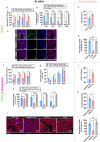
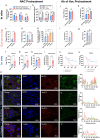
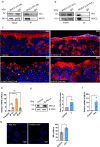
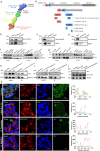
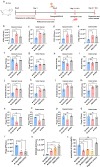
Similar articles
-
Escherichia coli phage ΦPNJ-9 adheres to mucus via a variant Hoc protein.J Virol. 2025 Feb 25;99(2):e0178924. doi: 10.1128/jvi.01789-24. Epub 2024 Dec 26. J Virol. 2025. PMID: 39723818 Free PMC article.
-
Subdiffusive motion of bacteriophage in mucosal surfaces increases the frequency of bacterial encounters.Proc Natl Acad Sci U S A. 2015 Nov 3;112(44):13675-80. doi: 10.1073/pnas.1508355112. Epub 2015 Oct 19. Proc Natl Acad Sci U S A. 2015. PMID: 26483471 Free PMC article.
-
Bacteriophage adhering to mucus provide a non-host-derived immunity.Proc Natl Acad Sci U S A. 2013 Jun 25;110(26):10771-6. doi: 10.1073/pnas.1305923110. Epub 2013 May 20. Proc Natl Acad Sci U S A. 2013. PMID: 23690590 Free PMC article.
-
Phage therapy targeting Escherichia coli-a story with no end?FEMS Microbiol Lett. 2016 Nov;363(22):fnw256. doi: 10.1093/femsle/fnw256. Epub 2016 Nov 9. FEMS Microbiol Lett. 2016. PMID: 27974392 Review.
-
Frontline defenders: goblet cell mediators dictate host-microbe interactions in the intestinal tract during health and disease.Am J Physiol Gastrointest Liver Physiol. 2018 Mar 1;314(3):G360-G377. doi: 10.1152/ajpgi.00181.2017. Epub 2017 Nov 9. Am J Physiol Gastrointest Liver Physiol. 2018. PMID: 29122749 Free PMC article. Review.
Cited by
-
Mucosal-adapted bacteriophages as a preventive strategy for a lethal Pseudomonas aeruginosa challenge in mice.Commun Biol. 2025 Jan 6;8(1):13. doi: 10.1038/s42003-024-07269-0. Commun Biol. 2025. PMID: 39762450 Free PMC article.
-
Gut phages and their interactions with bacterial and mammalian hosts.J Bacteriol. 2025 Feb 20;207(2):e0042824. doi: 10.1128/jb.00428-24. Epub 2025 Jan 23. J Bacteriol. 2025. PMID: 39846747 Free PMC article. Review.
-
Phollow: Visualizing Gut Bacteriophage Transmission within Microbial Communities and Living Animals.bioRxiv [Preprint]. 2024 Jun 13:2024.06.12.598711. doi: 10.1101/2024.06.12.598711. bioRxiv. 2024. PMID: 38915633 Free PMC article. Preprint.
-
Distinct effects of mucin on phage-host interactions in model systems of beneficial and pathogenic bacteria.Arch Virol. 2025 May 20;170(6):133. doi: 10.1007/s00705-025-06322-5. Arch Virol. 2025. PMID: 40392378 Free PMC article.
-
Phollow reveals in situ phage transmission dynamics in the zebrafish gut microbiome at single-virion resolution.Nat Microbiol. 2025 May;10(5):1067-1083. doi: 10.1038/s41564-025-01981-1. Epub 2025 Apr 18. Nat Microbiol. 2025. PMID: 40251446 Free PMC article.
References
MeSH terms
Substances
LinkOut - more resources
Full Text Sources
Medical
Miscellaneous

